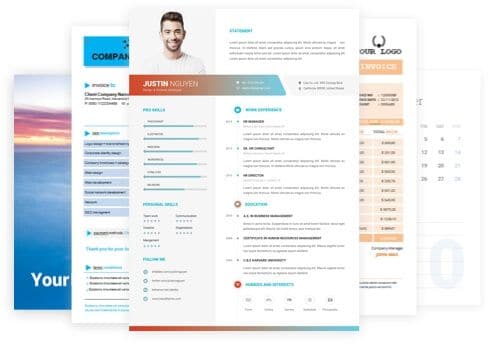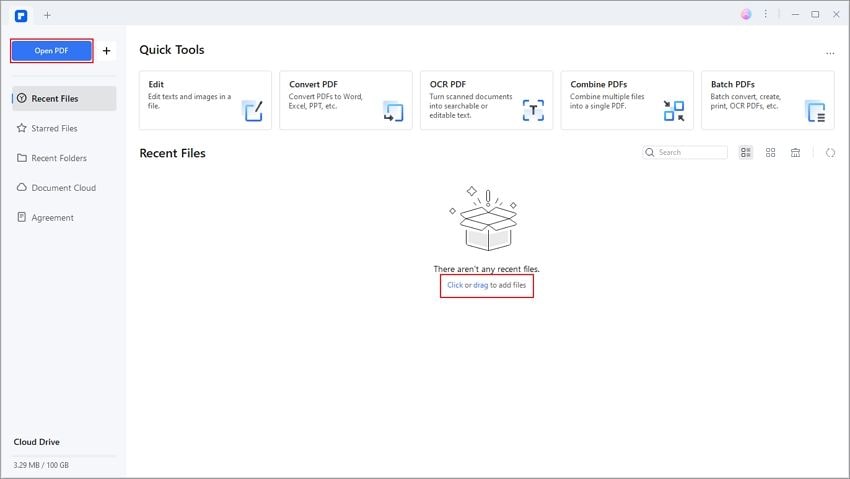The purpose of a cover letter is to introduce yourself to a potential employer in a professional way. By writing a cover letter, you can convey the kind of personality you have to an employer and help them make an informed decision on your job application based on the expansion of your skills, and the professionalism you show in the cover letter.
- # Get to Know the Purpose of a Cover Letter
- # Things You Shouldn't Say to Clarify Your Purpose
- # How to Edit the Cover Letter Template
Cover Letter Template

This is a free cover letter template. Free Download and customize it according to the sample text below.
Supported formats


Get to Know the Purpose of a Cover Letter
If you're asking yourself "What is the purpose of a cover letter?" or some similar question, you may be wondering if you need to write one at all. We can assure you that writing a cover letter to an employer could be the difference between getting an interview and your application being overlooked. Here are some reasons why cover letters are important and why they have a purpose in your job application:
- They introduce you to the employer. Your CV alone cannot speak for you, but by writing a cover letter to your potential employer, you're giving them a chance to know the person behind the qualifications.
- A cover letter shows that you're professional. Anyone can write a CV, or have a CV written for them. But the way a cover letter is written allows an employer to see not only how the education you are, but how well you have grasped the English language, as well as how you come across in a professional setting.
- To outline your skills. Your CV may cover your skills, but it covers all of them, usually in some kind of list format, which can be quite boring to read. With a cover letter, you can explain how the skills you have are relevant to the job you're applying for, and how you gained them at your current or previous position.
- To elaborate on your experiences. A CV does not contain any explanation of job experience. The purpose of a cover letter is to allow your potential employer to see what you can handle in a work setting, and what you're already trained to do.
- Create a call for action. A cover letter enables you to request a callback or an interview wherein you can further discuss what you can bring to a job role.
- To demonstrate your interest. As our final point, the true purpose of a cover letter, past the need to introduce your skills and experiences, is to demonstrate to the employer that you are truly interested in the job role that you're applying for.
Things You Shouldn't Say To Clarify Your Purpose
Now that we've covered what the purpose of a cover letter is, we can help you understand what you can do to individualise your cover letter.
- Elaborate on the various attributes you have that other applicants might not. This includes any extra training, and leadership roles you've been in, and any workshops you've led or been a part of. Workplaces always appreciate people with extra training, even if it's just first aid training.
- Try not to make your cover letter plain and boring. White space on the page is good, and you definitely shouldn't be writing any more than 500 words for a standard job application, unless it's an academic position. Add a splash of colour somewhere, something simple but unique.
- Highlight all of your relevant experiences. Employers want to know that you can do the job. If you're applying to the position without relevant experience, you're wasting their time. They want an experienced person that they can trust with the duties they need filling in.
- Appeal to the company by linking your experiences and skills back to their job advert. This will show your interest in the position.
- Add in small details pertinent to the company's motto or ideals. This shows that you've researched the company, and that your ideals match up with theirs. For example, if the company boasts customer service, ensure you note any customer service experience or awards/recognition you've had in the past.
- Use the employer's name at the start of your cover letter. This, again, shows that you've researched into the company, and it's a great start to a job application.
- Sign the end of your cover letter with your name. Your signature is personal, and though it might not seem like much, taking the time to sign your cover letter and then scan it in to send it off to the employer shows that you care just a little more about your application. Electronic signatures are fine, too.
With all of these amazing tips, you're sure to fully understand the purpose of a cover letter and why it's so important that one accompanies your CV when you're filling out a job application. Your cover letter is the first interaction that an employer has with you, so it's best to make it count.
How to Edit the Cover Letter Template with Clear Purpose
After knowing the purpose of a cover letter, you probably want to prepare your own cover letter right now. It's easy. Just choose one of the proper templates in this page and then edit it with Wondershare PDFelement - PDF Editor Wondershare PDFelement Wondershare PDFelement, the best PDF editor. It will help you make changes to any elements in the template and make it your unique cover letter.

Step 1. Open the Cover Letter Template

Step 2. Click on "Edit" and Enter Your Text as You Like

Step 3. Complete and Save Your Cover Letter

 Create and convert cover letter in PDF.
Create and convert cover letter in PDF. Edit cover letter in PDF.
Edit cover letter in PDF. Summarize, translate, proofread contents with AI..
Summarize, translate, proofread contents with AI..






